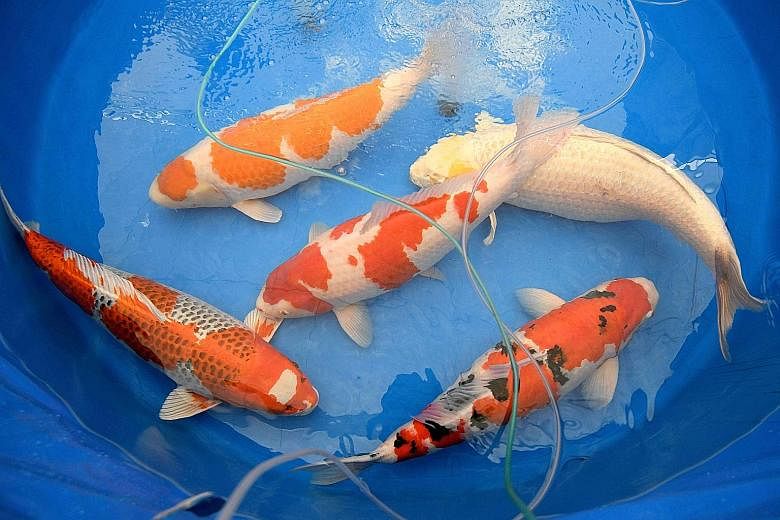KAZO (Japan) • Hand-reared for their colour and beauty, koi carp have become an iconic symbol of Japan, selling for hundreds of thousands of dollars and even participating in beauty contests for fish.
The nation's koi carp were brought to the world's attention when a photograph of visiting United States President Donald Trump unceremoniously dumping a box of fish food into a palace pond in Tokyo made headlines.
The fish have for decades been popular in Japan, where top breeders take their most prized specimens, known as nishikigoi, to highly competitive "beauty parades".
At one such competition in Tokyo, judges, notebooks in hand, stride around tanks lined up along a pedestrian street, and observe the valuable koi strut their stuff.
They come in all the colours of the rainbow: pearly white, bright red, cloudy grey, dark blue and gleaming golden yellow.
But it is the curvature of the fish that accounts for 60 per cent of the final score, said competition organiser Isamu Hattori, who runs Japan's main association for koi breeders. Colour and contrast make up another 30 per cent, he added.
And the final 10 per cent? That comes down to hinkaku - a concept that is tricky to define and even harder to judge, but best translated as the presence or aura of the fish.
"Hinkaku. It's either there in the genes at birth, or it's not," said the 48-year-old Mikinori Kurikara, a koi breeder in Saitama, north of Tokyo. He said he can spot it in the fish when the koi are about eight or nine months old.
At his farm, thousands of tiny nishikigoi dart around in deep basins of carefully purified water, meticulously divided by age and colour. A less glorious fate awaits the other koi that have not been fortunate enough to catch the eye of the breeder - they are sold to become fish feed for tropical fish.
"It's a really delicate job, really difficult. Everything matters - the ground, the water quality, the food," said Mr Kurikara, who took over the farm from his father, and is training his son in the subtle art of koi breeding.
The nishikigoi tradition started about 200 years ago, when villagers in the mountainous region around the north-western Niigata prefecture began to cross-breed rare and colourful carp - not for food but for pure aesthetical value.
The craze gradually took over the whole of Japan, and then spread into other parts of Asia.
Today, koi fish are big business and Japanese exports are booming - 90 per cent of domestic production is exported and sold at auctions. In 2016, Japan exported a record 295 tonnes of koi , generating a turnover of 3.5 billion yen (S$42 million), which is an increase of almost 50 per cent from 2007, according to Japan's agriculture ministry.
AGENCE FRANCE-PRESSE

